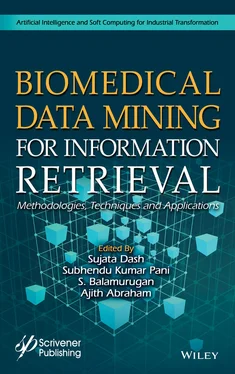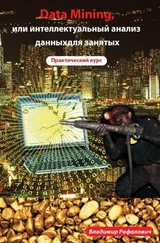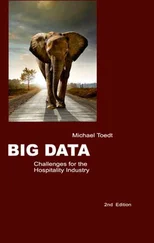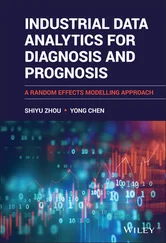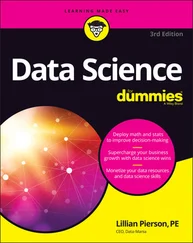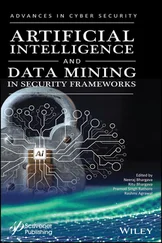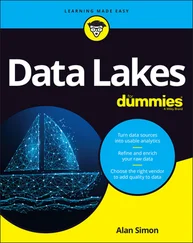24. Zou, J., Huss, M., Abid, A., Mohammadi, P., Torkamani, A., Telenti, A., A primer on deep learning in genomics. Nat. Genet. , 51, 12–8, 2019.
25. Eraslan, G., Avsec, Ž., Gagneur, J., Theis, F.J., Deep learning: New computational modelling techniques for genomics. Nat. Rev. Genet. , 20, 389–403, 2019.
26. Yang, J., Cao, R., Si, D., EMNets: A Convolutional Autoencoder is made available under a CC-BY-NC-ND 4.0 International license. bioRxiv , preprint, 2018, https://doi.org/10.1101/561027. The copyright holder for this preprint (which was not peer-reviewed) is the author/funder. It for Protein Surface Retrieval Based on Cryo-Electron Microscopy Imaging,” in Proceedings of the ACM International Conference on Bioinformatics, Computational Biology, and Health Informatics—BCB ‘18 , Washington, DC, USA, pp. 639–644.
27. Ng, A. and Si, D., Beta-Barrel Detection for Medium Resolution CryoElectron Microscopy Density Maps Using Genetic Algorithms and Ray Tracing. J. Comput. Biol. , 25, 6, 326–336, 2018.
28. Li, R., Si, D., Zeng, T., Ji, S., He, J., Deep Convolutional Neural Networks for Detecting Secondary Structures in Protein Density Maps from Cryo-Electron Microscopy. Proceedings , pp. 41–46, 2016.
29. Si, D., Ji, S., Nasr, K.A., He, J., A machine learning approach for the identification of protein secondary structure elements from electron cryo-microscopy density maps. Biopolymers , 97, 9, 698–708, 2012.
30. Huang, Q., Zhang, P., Wu, D., Zhang, L., Turbo Learning for CaptionBot and DrawingBot, in: Advances in Neural Information Processing Systems , vol. 20, pp. 6456–6466, Curran Associates Inc., USA, 2018.
31. Xu, T. et al. , AttnGAN: Fine-Grained Text to Image Generation with Attentional Generative Adversarial Networks, in: 2018 IEEE/CVF Conference on Computer Vision and Pattern Recognition , 2018.
32. Kosylo, N. et al. , Artificial Intelligence on Job-Hopping Forecasting: AI on Job-Hopping, in: Portland International Conference on Management of Engineering and Technology (PICMET) , 2018.
33. Keasar, C. et al. , An analysis and evaluation of the WeFold collaborative for protein structure prediction and its pipelines in CASP11 and CASP12. Sci. Rep. , 8, 1, 9939, 2018.
34. Hou, J., Wu, T., Cao, R., Cheng, J., Protein tertiary structure modeling driven by deep learning and contact distance prediction in CASP13. bioRxiv , Open Access 552–422, 15 April 2019, https://doi.org/10.1002/prot.25697.
35. Pauling, L. and Corey, R.B., The pleated sheet, a new layer configuration of the polypeptide chain. Proc. Natl. Acad. Sci. , 37, 251–256, 1951.
36. Pauling, L., Corey, R.B., Branson, H.R., The structure of proteins: Two hydrogen bonded helical configurations of the polypeptide chain. Proc. Natl. Acad. Sci. , 37, 205–211, 1951.
37. Kendrew, J.C., Dickerson, R.E., Strandberg, B.E., Hart, R.J., Davies, D.R., Phillips, D.C., Shore, V.C., Structure of myoglobin: A three-dimensional Fourier synthesis at 2_a resolution. Nature , 185, 422–427, 1960.
38. Perutz, M.F., Rossmann, M.G., Cullis, A.F., Muirhead, G., Will, G., North, A.T., Structure of haemoglobin: A three-dimensional Fourier synthesis at 5.5 Angstrom resolution, obtained by x-ray analysis. Nature , 185, 416–422, 1960.
39. Dill, K.A., Dominant forces in protein folding. Biochemistry , 31, 7134–7155, 1990.
40. Laskowski, R.A., Watson, J.D., Thornton, J.M., From protein structure to biochemical function? J. Struct. Funct. Genomics , 4, 167–177, 2003.
41. Travers, DNA conformation and protein binding. Annu. Rev. Biochem. , 58, 427–452, 1989.
42. Bjorkman, P.J. and Parham, P., Structure, function and diversity of class I major histocompatibility complex molecules. Annu. Rev. Biochem. , 59, 253– 288, 1990.
43. Yang, J., Cao, R., Si, D., EMNets: A Convolutional Autoencoder for Protein Surface Retrieval Based on Cryo-Electron Microscopy Imaging, in: Proceedings of the 2018 ACM International Conference on Bioinformatics, Computational Biology, and Health Informatics—BCB ‘18 , Washington, DC, USA, pp. 639–644, 2018.
44. Ng, A. and Si, D., Beta-Barrel Detection for Medium Resolution CryoElectron Microscopy Density Maps Using Genetic Algorithms and Ray Tracing. J. Comput. Biol. , 25, 3, 326–336, Mar. 2018.
45. Li, R., Si, D., Zeng, T., Ji, S., He, J., Deep Convolutional Neural Networks for Detecting Secondary Structures in Protein Density Maps from Cryo-Electron Microscopy. Proceedings , 2016, 41–46, Dec. 2016.
46. Si, D., Ji, S., Nasr, K.A., He, J., A machine learning approach for the identification of protein secondary structure elements from electron cryo-microscopy density maps. Biopolymers , 97, 9, 698–708, Sep. 2012.
47. Huang, Q., Zhang, P., Wu, D., Zhang, L., Turbo Learning for CaptionBot and DrawingBot, in: Advances in Neural Information Processing Systems , vol. 31, S. Bengio, H. Wallach, H. Larochelle, K. Grauman, N. Cesa-Bianchi, R. Garnett (Eds.), pp. 6456–6466, Curran Associates, Inc., USA, 2018.
48. Xu, T. et al. , AttnGAN: Fine-Grained Text to Image Generation with Attentional Generative Adversarial Networks, in: 2018 IEEE/CVF Conference on Computer Vision and Pattern Recognition , 2018.
49. Kosylo, N. et al. , Artificial Intelligence on Job-Hopping Forecasting: AI on Job-Hopping, in: 2018 Portland International Conference on Management of Engineering and Technology (PICMET) , 2018.
50. Keasar, C. et al. , An analysis and evaluation of the WeFold collaborative for protein structure prediction and its pipelines in CASP11 and CASP12. Sci. Rep. , 8, 1, 9939, Jul. 2018.
51. Hou, J., Wu, T., Cao, R., Cheng, J., Protein tertiary structure modeling driven by deep learning and contact distance prediction in CASP13. bioRxiv , Open Access 552422, 15 April 2019, https://doi.org/10.1002/prot.25697.
52. Moult, J., Fidelis, K., Kryshtafovych, A., Schwede, T., Tramontano, A., Critical assessment of methods of protein structure prediction (CASP)-Round XII. Proteins , 86, Suppl 1, 7–15, Mar. 2018.
53. Kendrew, J.C., Dickerson, R.E., Strandberg, B.E., Hart, R.J., Davies, D.R., Phillips, D.C., Shore, V.C., Structure of myoglobin: A three-dimensional Fourier synthesis at 2_a resolution. Nature , 185, 422–427, 1960.
54. Perutz, M.F., Rossmann, M.G., Cullis, A.F., Muirhead, G., Will, G., North, A.T., Structure of haemoglobin: A three-dimensional Fourier synthesis at 5.5 Angstrom resolution, obtained by X-ray analysis. Nature , 185, 416–422, 1960.
55. Travers, A., DNA conformation and protein binding. Annu. Rev. Biochem. , 58, 427–452, 1989.
56. Bjorkman, P.J. and Parham, P., Structure, function and diversity of class I major histocompatibility complex molecules. Annu. Rev. Biochem. , 59, 253– 288, 1990.
57. Bernstein, F.C., Koetzle, T.F., Williams, G.J., Meyer, E.F., Brice, M.D., Rodgers, J.R., Kennard, O., Shimanouchi, T., Tasumi, M., The protein data bank. Eur. J. Biochem. , 80, 319–324, 1977. [CrossRef] [PubMed].
58. Consortium, U., The universal protein resource (UniProt). Nucleic Acids Res. , 36, D190–D195, 2008. [CrossRef] [PubMed].
59. Kabsch, W. and Sander, C., Dictionary of protein secondary structure: Pattern recognition of hydrogen-bonded and geometrical features. Biopolymers , 22, 2577–2637, 1983. [CrossRef] [PubMed].
60. Murzin, A.G., Brenner, S.E., Hubbard, T., Chothia, C., Scop: A structural classification of proteins database for the investigation of sequences and structures. J. Mol. Biol. , 247, 536–540, 1995. [CrossRef].
Читать дальше
